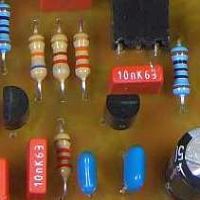
Categories
Statistics
Since 08.08.2014
Counts only, if "DNT = disabled".
Your IP is 18.223.108.134
ec2-18-223-108-134.us-east-2
Counts only, if "DNT = disabled".
Your IP is 18.223.108.134
ec2-18-223-108-134.us-east-2
Info
เราจะทำแบบวิศวกรผู้ยิ่งใหญ่

21. January 2025
YOU RATED THIS ...
avg = 0.0 , n = 0


XCO-100.php 23396 Bytes 23-04-2024 14:32:12
Micro-Projects • Tools : A universal XCO/PLL Board
Some kind of replacement (obituary) for those valuable crystal oscillators which made clock
generation by simply using one of the harmonics that easy.

Motivation


As it seems, that the industry switched from producing crystal oscillators with discrete crystals to programmeable pll
circuits, a branch of valuable parts for homebrewing high frequency clock sources is dying out. The replacement is
very unsuiteable for generating clock sources of high purity due to a fence of spurious garbage.


Circuit
The circuit is straightforward. It may be equipped with the NB3N501, NB3N502 or NB3N511 from ONSEMI.
As we wanted to use parts not smaller than 1206, the formfactor is 'slightly' larger than the xco in it's DIL-14 case.
Therefore assembly can be done without the help of a microscope.
With three jumpers, all different frequency options are covered.
If necessary, a voltage regulator may be assembled as well. The pcb is single sided, i.e. the bottom layer is ground. One bridge (wired) at the bottom
was unavoideable.

NB3N502 inside. Drawing courtesy of ONSEMI.
The table below shows the necessary crystal for a given (desired) frequency.
NOTE : The datasheet guarantees operation to approx. 200 MHz. The calculations are therefore limited to 220 MHz.
The crystal frequency may not be larger than approx. 27 MHz. Read the datasheet.
This tool does stupid calculations to support smart designers.
Performance • Test
NB3N502, xtal : 24 MHz, F : 120 MHz, C7,C8 : 10 pF, not assembled : R1,R4,R5,R6,R9
Supply : 8 V (with 5V regulator onboard), current : 38 mA, output power : +13 dBm
Supply : 8 V (with 5V regulator onboard), current : 38 mA, output power : +13 dBm




NB3N502, xtal : 40 MHz, F : 160 MHz, C7,C8 : 10 pF, not assembled : R1,R4,R5,R7,R8
Supply : 8 V (with 5V regulator onboard), current : 30 mA, (output power : +13.3 dBm)
Supply : 8 V (with 5V regulator onboard), current : 30 mA, (output power : +13.3 dBm)


As the crystal frequency was chosen too high, the crystal oscillator oscillates at the (obviously fundamental) frequency of 13.333 MHz (Pin 4) and therefore
the multiplied (x4) output is at 53.333 MHz. ►►► The crystal frequency is too far away from specifications.
NB3N502, xtal : 32 MHz, F : 160 MHz, C7,C8 : 10 pF, not assembled : R1,R4,R5,R6,R9
Supply : 8 V (with 5V regulator onboard), current : 40 mA, (output power : +12.6 dBm)
Supply : 8 V (with 5V regulator onboard), current : 40 mA, (output power : +12.6 dBm)

Getting closer to the specifications, a 32 MHz crystal seems to be more acceptable, as we get the desired output spectrum.
Around the carrier, it looks like some 16 MHz spectral lines are also visible. Probably from a frequency divider
in the PLL.
Fazit
This solution also has spurious emissions which are a multiple of the chosen crystal frequency.
Therefore we can control/predict the spurii location. It is advantageous to choose the highest possible frequency for the
quartz. This will move the spurii far away from the desired frequency as well as a low multiplication factor offers
lower noise (at least theoretically, not yet measured). The output spectrum is rich in harmonics which should make it easy to filter the desired harmonic.
No (unwanted) harmonics foul the spectrum, if you use the NB3N502 and select the "REF" output (Pin 4), which reduces the system to a simple
crystal oscillator.
✈ Share your thoughts
The webmaster does not read these comments regularely. Urgent questions should be send via email.
Ads or links to completely uncorrelated things will be removed.
Your Browser says that you allow tracking. Mayst we suggest that you check that DNT thing ?
 ช้างเผือก
ช้างเผือก




